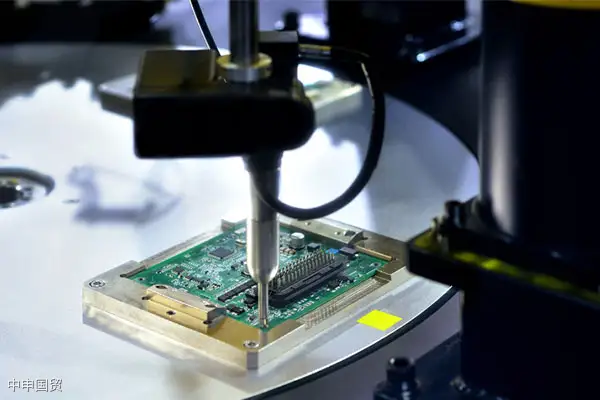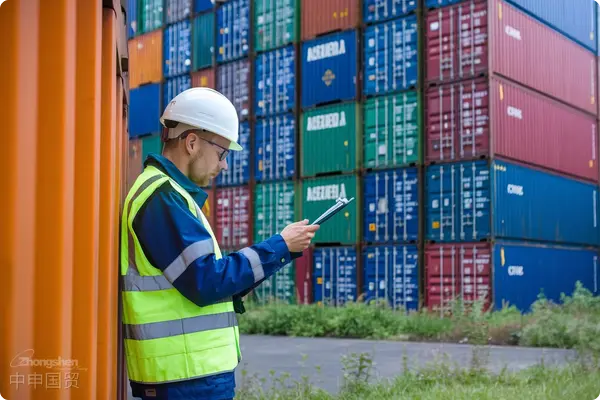- Shanghai Zhongshen International Trade Co., Ltd. - Two decades of trade agency expertise.
- Service Hotline: 139 1787 2118

The U.S. government further tightened restrictions on Chinas semiconductor industry on the 2nd of this month, drawing significant attention from the international industry. According to reports from Lianhe Zaobao and Reuters, the new U.S. measures target high-bandwidth memory chips (HBM), 24 types of manufacturing equipment, and three types of software exported to China, aiming to prevent China from acquiring more advanced memory chips and high-end manufacturing tools. These new restrictions not only affect products directly exported from the U.S. to China but also, under the Foreign Direct Product Rule (FDPR) established by the U.S. Department of Commerce, require special licenses for exports to China of related products manufactured in third countries using U.S. technology or software. This rule expands U.S. control over Chinas technology sector and poses potential impacts on economies like Singapore, which have close trade ties with China.
Singapore is a key source of semiconductor manufacturing equipment imports for China. Chinese customs data shows that in the first three quarters of this year, China imported approximately $5.18786 billion worth of semiconductor equipment from Singapore, second only to Japan and the Netherlands. However, while Japan and the Netherlands received exemptions under these new measures, Singapore did not. This means that after the expanded application of the FDPR, Singaporean companies will face stricter controls when selling semiconductor equipment to China, requiring special licenses from U.S. authorities for smooth exports. As one of the fastest-growing countries in the global semiconductor industry, with a growth rate of 23% from 2007 to 2022, Singapores local businesses now face challenges in supply chain adaptability, operational flexibility, and market strategy due to these heightened controls.Equipment ExportAng Wee Seng, Executive Director of the Singapore Semiconductor Industry Association, told Lianhe Zaobao that the new restrictions will complicate operations for local companies in terms of supply chain and compliance. Businesses must balance maintaining China as a key market while adhering to U.S. regulations, finding a delicate equilibrium. Several international semiconductor equipment manufacturers have set up or expanded operations in Singapore in recent years, including U.S.-based Applied Materials and KLA, the Dutch NTS Group, and the joint venture wafer fab between Taiwans Vanguard International Semiconductor (VIS) and NXP Semiconductors. These companies all operate in China. For example, Applied Materials derived 43% of its sales from the Chinese market between February and April this year, while NXP is committed to building a supply chain in China to meet local customer demand. However, the expanded U.S. controls may force these companies to adjust their production and supply models between Singapore and China.
Singapore has a free trade agreement with the U.S., but experts note that this does not fully exempt it from the latest export control policies. Visiting researcher Maria Monica Wihardja analyzed that the expanded FDPR poses potential challenges to Singapores semiconductor and high-tech exports. She also noted that, given recent U.S. foreign policy trends, even as a U.S. free trade partner, Singapore cannot expect special exemptions in highly sensitive technology control areas.
Additionally, Singapore must be wary of being seen as a transshipment hub for whitewashed products. In the past, companies may have attempted to leverage Singapores neutral reputation to relabel product origins and bypass export restrictions to China. However, with heightened U.S. scrutiny, such practices will face tighter constraints. The inclusion of Singapore-based Skyverse on the Entity List serves as an example, as the company is linked to Chinas Shenzhen Zhongke Feice, affiliated with the Chinese Academy of Sciences, indicating U.S. regulators close attention to supply chain and affiliated company ties.
Neighboring Malaysia is also subject to the FDPR. Malaysian authorities have publicly urged Chinese companies not to use the country as a transshipment point for relabeled products to avoid collateral risks in U.S.-China trade and tech tensions.
Analysts point out that while U.S. efforts to curb Chinas tech development may pressure Chinese firms in the short term, they could accelerate Chinas push for technological self-reliance and innovation in the long run, reducing dependence on U.S. technology in high-end manufacturing and chip design. The exemptions for Japan and the Netherlands reflect strategic allocations in the tech competition landscape. Japan and the Netherlands possess high levels of technological autonomy in specific semiconductor equipment sectors, such as the Netherlands ASML, a global leader in lithography machines, whose technology does not heavily rely on the U.S. Hence, the U.S. grants these key suppliers certain exemptions to avoid disrupting the global semiconductor supply chain.
Nevertheless, this presents an alternative direction for Singapore. Deepening cooperation with exempted countries could be a viable path, allowing Singapore to enhance its position in the semiconductor supply chain, diversify its supply sources, reduce reliance on single markets, and leverage the technological strengths of Japan and the Netherlands to support local industry upgrades. Amid ongoing geopolitical and tech rivalries, Singaporean businesses and policymakers must carefully assess how to maintain industrial vitality and competitiveness while staying compliant.
Customs General Administrations 16 Measures: The Transformative Power of Import-Export Clearance
Related Recommendations
? 2025. All Rights Reserved. 滬ICP備2023007705號-2  PSB Record: Shanghai No.31011502009912
PSB Record: Shanghai No.31011502009912









